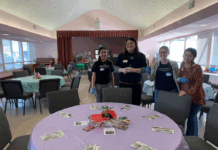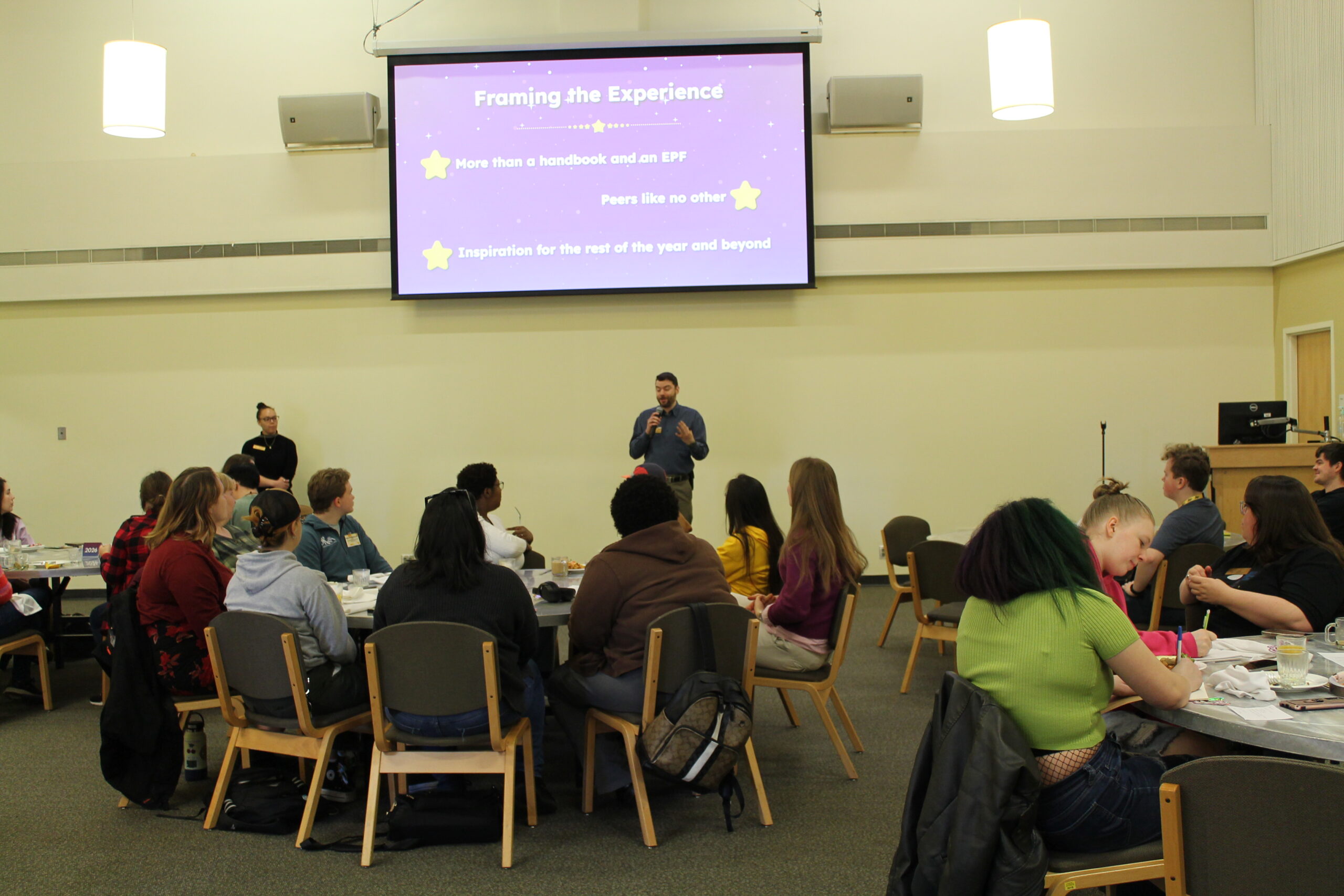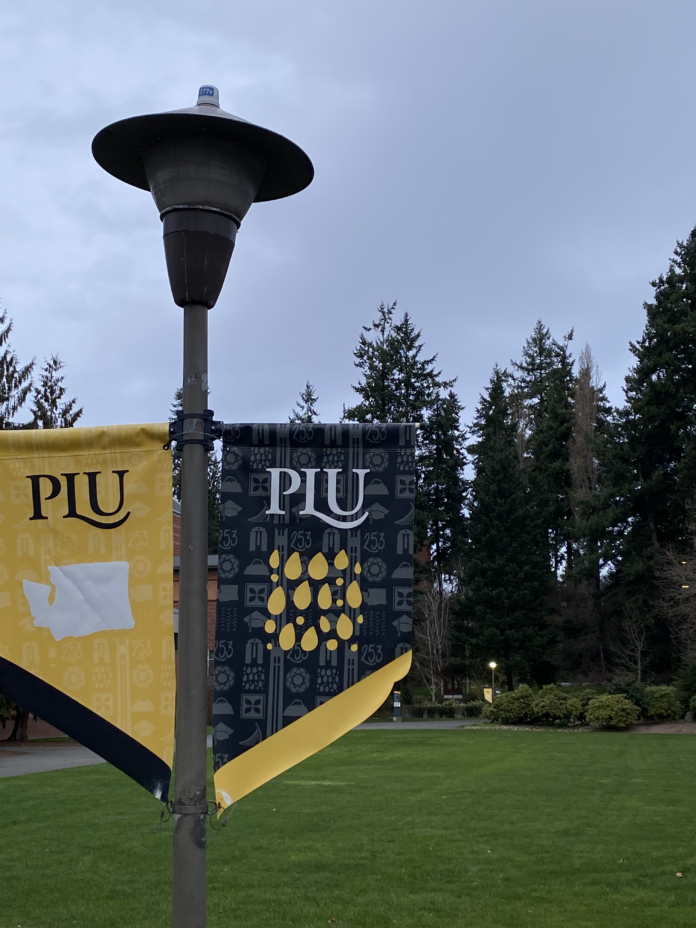In the five months I’ve been at PLU, I have adjusted to many new things, including a full class schedule, new friends, and balancing healthy habits. But one thing that I’ve never adjusted to is the lack of exterior lighting on lower campus.
In the beginning, I didn’t notice it as much. The days were longer, there was more light in the evening, and I wasn’t out when darkness was prevalent. As I started to get comfortable with my new lifestyle, I began to explore what PLU has to offer. But the days were getting shorter and my schedule didn’t allow for much flexibility throughout the day, so I had to start going to events at night.
My main example of this is walking to Names Fitness Center. While a pleasant walk during the day, the nighttime trek from Names to Tingelstad Hall is quite daunting. Darkness consumes the now-empty plot of land where Foss once stood, completely lightless. I can recall on multiple occasions nervously booking it out of Names, Hydro Flask in hand, ready to defend myself at a moment’s notice. I would practically run through the entrance to Pflueger, using it as a shortcut to Tingelstad.
At some point I realized how dark it actually was out there. I started to pay attention to which light fixtures were out and if they ever got fixed. Upon my inquiry, I found two of the four light fixtures bordering the entrance to Tingelstad Hall out (and have been since September), one out between Tingelstad and Pflueger, one out in the tennis courts, and six out between Rieke, Olson, Foss, and the swimming pool.
In total, that makes 11 out of the 42 light fixtures between the designated perimeters that are supposedly keeping lower campus aglow.
Campus Safety’s Personal Safety Tips page recommends students “choose routes that avoid dark or vacant areas.” Ideally, yes, I would love to choose the route that best supports my transportation needs, getting me from one place to another with ample lighting and acceptable pedestrian traffic. But what if all my routes (including my backup ones) are inadequate? How can students be asked to choose a well-lit path when the ones in question are dark? When there is no light to be had, the statement above becomes irrelevant.
Campus Safety also recommends traveling in groups, a familiar but effective approach to personal safety. What they don’t account for, however, is the fun little fact that it is not always convenient to travel with a group. It is not feasible for students to constantly rely on other people to walk with them from place to place, considering that everyone else also has a multitude of things to balance each day.
Now, I’m not knocking Campus Safety for their efforts to provide safety services to students. Campus Safety has a 24/7, 365 phone line that students can call to be escorted to their desired location. I myself have used this service, and have had a good experience with the personnel. While the escort services that Campus Safety provides are extremely beneficial, it is unreasonable for students to call them every time they feel uncomfortable walking at night. While awaiting campus safety’s arrival, a short two minute walk turns into a ten minute waiting period that has now taken longer than it needed to.
What I am saying, though, is that students should be able walk around campus without the fear of insufficient lighting stopping them.
I did some research on what other universities in the Pacific Northwest region were doing to combat the lighting crisis on their campuses. Through my exploration, I found a Campus Outdoor Lighting Plan created by the University of Oregon. According to the university’s plan document, “this plan defines lighting parameters for entrances, pedestrian walkways, and parking lots on campus.” The university also states that “this plan is designed to address the key issues and concerns surrounding the subject of outdoor lighting on campus.” The plan is complete with general lighting requirements, the university’s criteria for selecting light fixture designs, and a map of outdoor lighting walkways.
PLU has no such thing.
I think that PLU should adopt a similar approach to the University of Oregon. If the university created an exterior lighting plan, it would ensure that there is a record of the expectations that are to be upheld by them to ensure sufficient lighting on campus. Additionally, it would provide students with the security that the university is looking out for their safety when it comes to exterior lighting, and also shows PLU’s initiative towards building transparency between Campus Safety and students.
Choosing to create a map of outdoor lighting walkways would be a strong resource for students when considering routes for commuting around campus. There would be no need for students to create their own plan to walk around campus (complete with alternative routes) if the university just provided us with a simple map. Additionally, the map would act as an accountability mechanism to ensure that Campus Safety and its surrounding staff are staying consistent with the upkeep of the light fixtures. All in all, nighttime safety stress is a legitimate concern at PLU. Having an outdoor lighting plan would increase safety measures associated with this stress and improve the university’s clarity when it comes to overall campus safety.


















